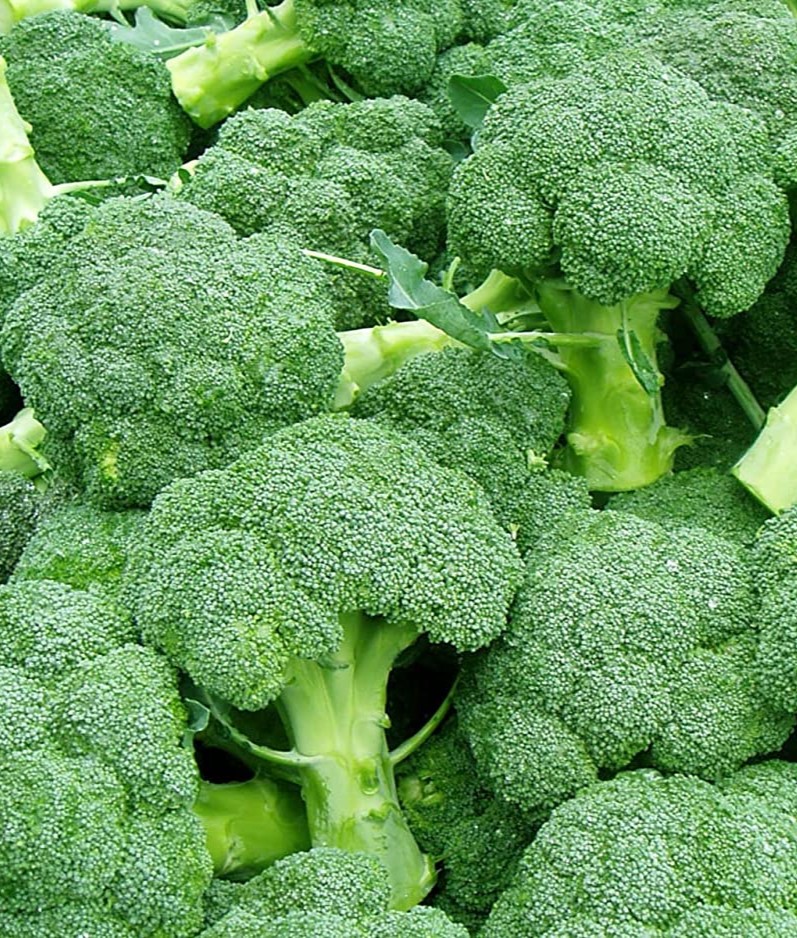

Brassica oleracea var. italica Plenck
|
Broccoli is a cruciferous vegetable belonging to the family Brassicaceae. The flowering head, its stalk and small associated leaves are eaten as a vegetable. Broccolis are a rich source of carotenoids (lutein), flavonoids (kaempferol), phenolic acids (Sinapic acid) and Organosulfur compounds (sulforaphane). It enhances anti-inflammatory properties by reducing the pro-inflammatory cytokines (IL-6, TNF-α,IL-1-β) and iNOS. It helps in reducing cancerous cells by the help of endogenous antioxidant enzymes like Heme oxygenase-1, glutathione and super-oxide dismutase. Mode of Consumption : Sauteed, fried and boiled |
| Plant Details | Agro-climatic Zone | Vernacular Names | Pictures |
| Scientific Name: Brassica oleracea var. italica Plenck Family: Brassicaceae Burnett Class: Magnoliopsida Order: Capparales Genus: Brassica L. Fruiting Season: October to April Parts: Flowering head |
|
Andhra Pradesh : Broccoli Assam : Broccoli Bihar : Broccoli Himachal Pradesh : Broccoli Karnataka : Broccoli Kerala : Broccoli Punjab : Broccoli Tamil nadu : Broccoli Uttar Pradesh : Broccoli Uttarakhand : Broccoli |
 Flowering head |
| Compound/Extract | Activity | Mode of Action | Marker/References |
| Broccoli sprouts | Anti-inflammatory | Broccoli sprouts reduces secretion of pro-inflammatory cytokines IL-6, TNF-α,IL-1-β and iNOS. | IL-6, TNF-α,IL-1-β and iNOS[1] |
| Boroccoli powder | Antioxidant | Broccoli powder increases the quantity of endogenous antioxidants like HO1, SOD, GSH. | HO1, SOD, and GSH[4] |
| Major Class | Metabolites (Content of bioactives: mg/100g Fresh Weight) |
| Carotenoid | Lutein: 1.11 mg/100g, Neoxanthin: 0.51 mg/100g[2] |
| Chlorophyll | Chlorophyll a: 73.73 mg/100g[2] |
| Flavonoid | Kaempferol : 0.08-8.77 mg/100g, Quercetin : 10.80-27.43 mg/100g[2] |
| Glucosinolate | Sulforaphane : 6.04 mg/100g[2] |
| Phenolic acid | Iso-chlorogenic acid : 7.78 mg/100g, Sinapic acid: 12.6 mg/100g[2] |
| Effect | Observation | DOI |
| Animal model studies | Increased count of of Lactobacillusspp. | DOI: 10.1021/jf100296m |
| Animal model studies | Increased production of SCFAs | DOI: 10.1021/jf100296m |
| Human clinical studies | Increase in the abundance of Bacteroidetes and BacteroidsI | DOI: 10.1016/j.jnutbio.2018.09.015 |
| Human clinical studies | Increase in the count of Bacteroidetes | DOI: 10.3945/jn.109.108191 |
| Human clinical studies | Decrease in the count of Firmicutes | DOI: 10.3945/jn.109.108191 |
| Disease | Formulation | Reference | Author | TKDL |
| Information from Wealth of India | Reference |
| 4.2, 04.2.1, 04.2.1.1, 04.2.1.3, 04.2.2.3, 04.2.2.5, 04.2.2.6, 04.2.2.8 |
| CSIR-North East Institute of Science and Technology, Jorhat-6, Assam, India
CSIR-Institute of Himalayan Bioresource Technology, Palampur-61,Himachal Pradesh, India |